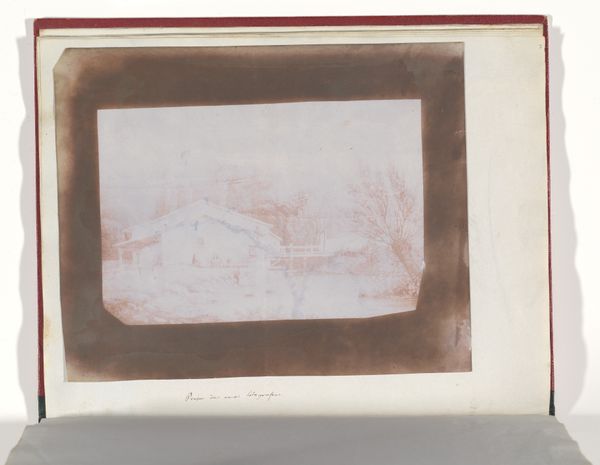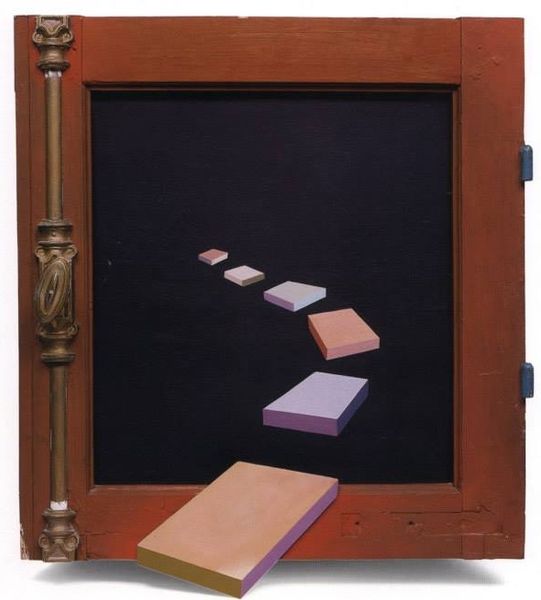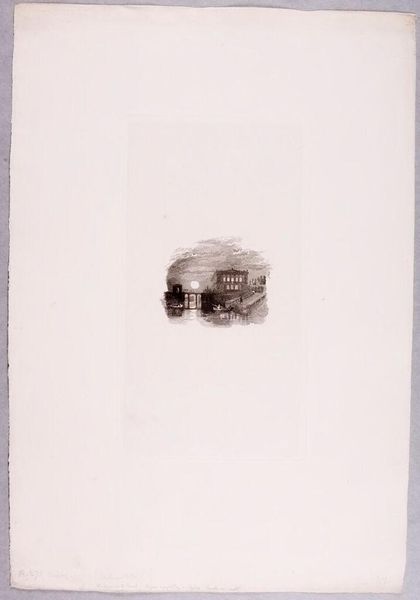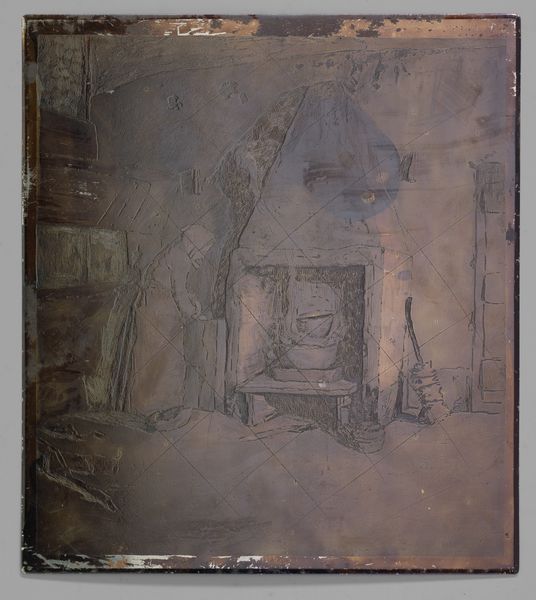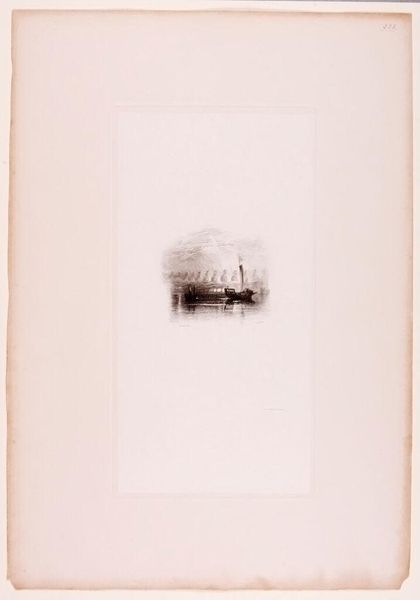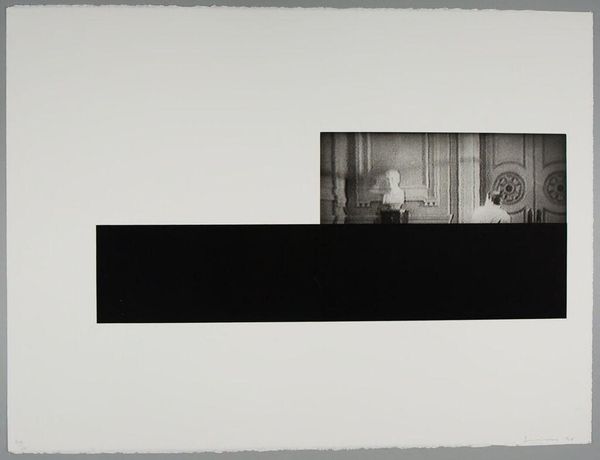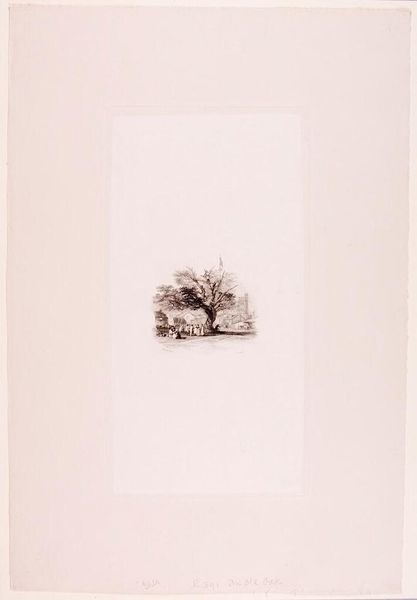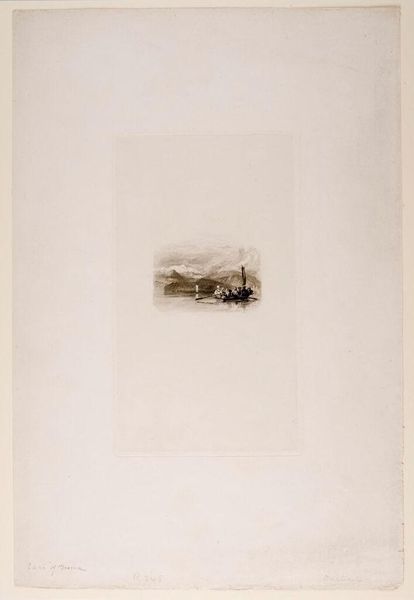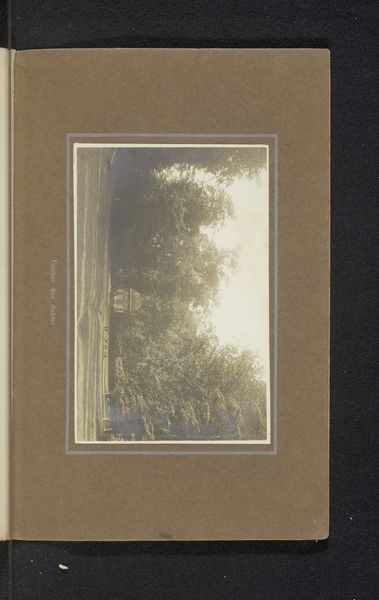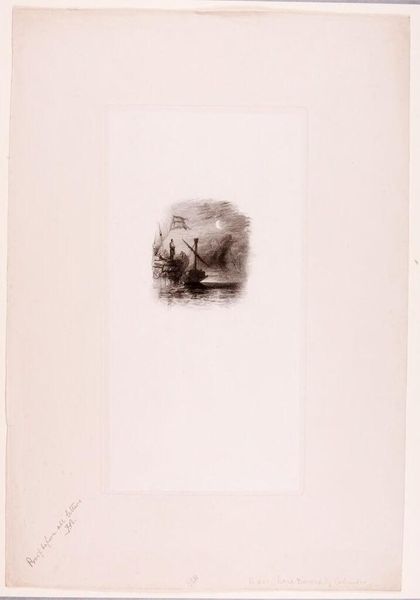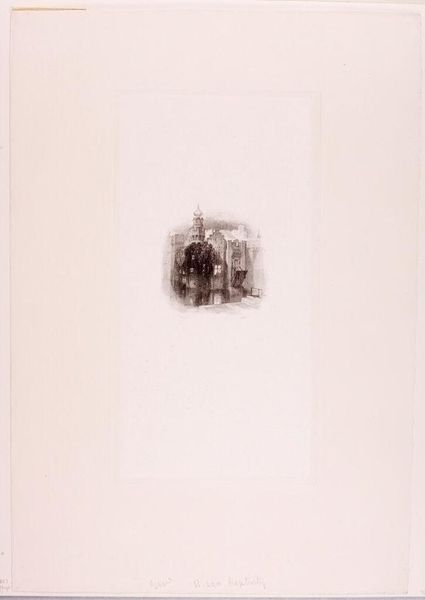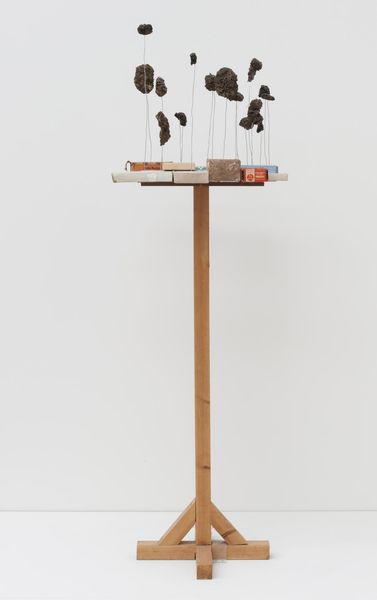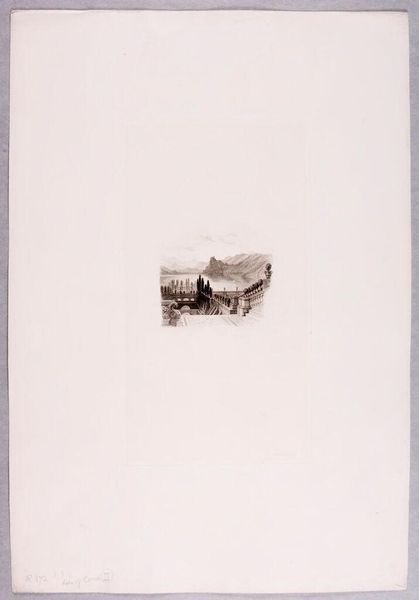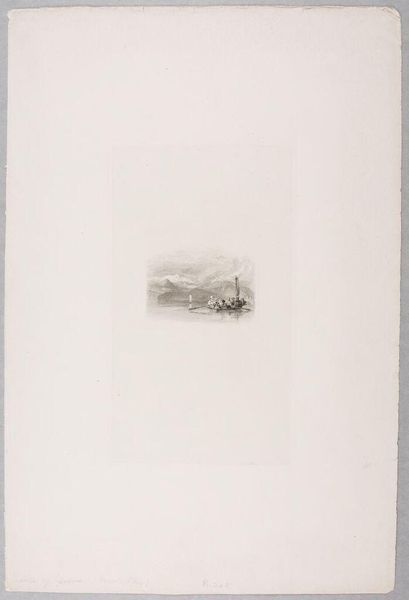
Copyright: © Mat Collishaw | CC-BY-NC-ND 4.0 DEED, Photo: Tate
Editor: Mat Collishaw's "Hollow Oak" is fascinating. It looks like a photograph within a crafted wooden and glass structure. The visible machinery gives it a scientific, almost voyeuristic feel. What's your take on this unusual presentation? Curator: Well, let's consider the means of production. Collishaw uses this equipment to re-present photography, nodding to its history, but also highlighting the mechanics behind image-making. The "craft" challenges photography as purely representational. Is it about the image, or the labor generating it? Editor: So, it’s about the physical process just as much as the final image? Curator: Precisely! And the title, "Hollow Oak", might suggest a critique of authenticity. Think about it: Nature represented through mechanical means, a manufactured experience. Editor: I see! It makes you think about how we consume images and their construction. Thanks for the insight. Curator: My pleasure. Thinking about the materials brings a new dimension to understanding the artwork.
Comments
Join the conversation
Join millions of artists and users on Artera today and experience the ultimate creative platform.
tate 4 months ago
⋮
This video installation is one of a number of works in which Collishaw draws attention to the ways in which our perception of nature is framed by culture. On this occasion he literally frames the image of an oak tree with an historical object, the original wooden negative carrying case of a nineteenth century camera. Projected onto etched glass, the image too has the appearance of an early photograph, despite being a moving image. The oak tree, as a traditional icon of Englishness, is also associated with the past. The viewer's contemplation of the contained, apparently still image is momentarily disturbed when the wind rustles through the leaves and the grazing sheep gently bleat. Gallery label, August 2004
